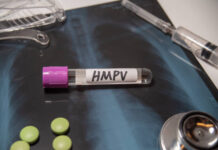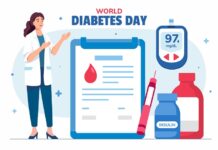The World Health Organization (WHO) has raised the alarm about the growing resistance of fungal diseases to existing treatments, highlighting a serious and expanding global health threat. On Tuesday, April 1, WHO released its first-ever reports focusing on diagnostic tools and treatments for invasive fungal infections.
Fungal Infections Increasingly Resistant to Treatment
According to the WHO, common fungal infections—such as Candida, which causes oral and vaginal thrush—are becoming increasingly resistant to standard antifungal medications. As a result, these infections are more difficult to treat, especially in patients who are already severely ill or have compromised immune systems.
People undergoing cancer chemotherapy, living with HIV, or receiving organ transplants face the greatest risk, as their weakened immunity makes them vulnerable to invasive fungal infections.
Lack of Diagnosis and Treatment in Vulnerable Regions
Dr. Yukiko Nakatani, WHO Assistant Director-General for Antimicrobial Resistance (ad interim), emphasized the urgent need for action. She noted,
“Invasive fungal infections threaten the lives of the most vulnerable, but countries lack the treatments needed to save lives.”
WHO pointed out that low- and middle-income countries often lack basic fungal testing facilities, even in district hospitals. This diagnostic gap leads to delayed or missed diagnoses, making it difficult for patients to receive appropriate treatments in time.
Deadly Fungi on the Rise
The WHO categorized several fungi in its Fungal Priority Pathogens List (FPPL) under the ‘critical priority’ level. These fungi have alarmingly high mortality rates, reaching up to 88% in some cases. The agency warned that, with modern medicine allowing more people to live with weakened immune systems, the incidence of these life-threatening infections may surge unless immediate action is taken.
Drug Development Pipeline Falls Short
Currently, the antifungal drug development pipeline remains worryingly stagnant. Over the past decade, only four new antifungal drugs received approval from major regulators in the US, EU, or China.
Although nine drugs are in clinical development, only three have reached phase 3 trials, while 22 remain in preclinical stages. WHO labeled this number as insufficient, especially considering the high failure rates in early drug development.
Existing Treatments Have Serious Limitations
As reported by TOI, the current antifungal medications come with serious side effects, frequent drug-drug interactions, and often require prolonged hospital stays. Furthermore, there are few pediatric-specific treatment options, leaving children at increased risk.
To address these challenges, WHO is advocating for the development of safer, more effective antifungal drugs, along with greater investment in surveillance systems, research, and innovative therapies—including treatments that enhance patients’ immune responses.
Diagnostic Challenges Persist
Although commercial tests for fungal pathogens do exist, they depend on well-equipped laboratories and trained staff. Unfortunately, such resources are often unavailable in low- and middle-income countries, contributing to delayed diagnoses and inappropriate treatment.
Additionally, many healthcare workers lack sufficient training on fungal diseases and antifungal resistance, which further complicates the identification and management of these infections.























